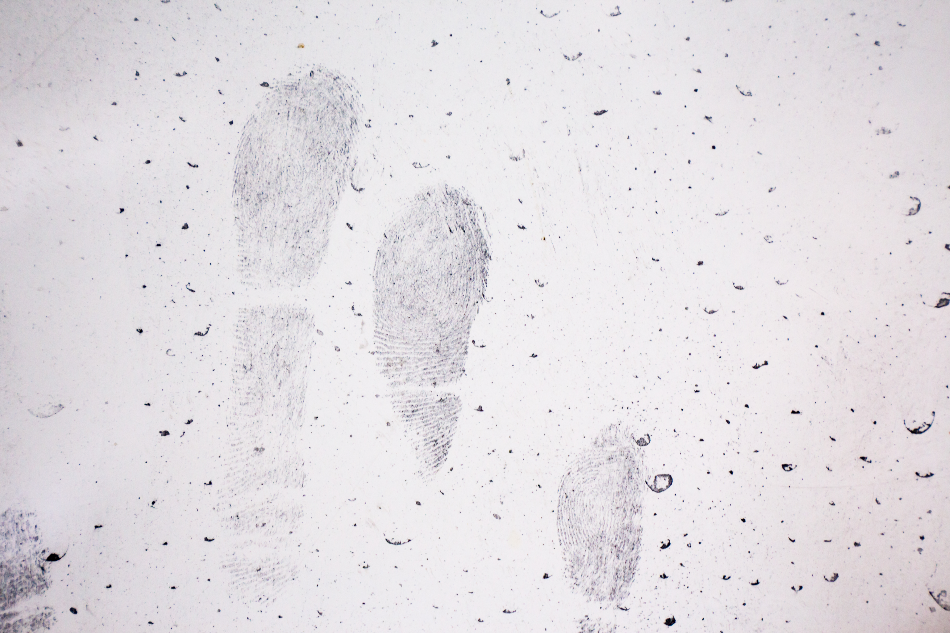The detection and use of latent fingerprints have been part of the bedrock of forensic science since the 19th century.

Image Credit: Prath/Shutterstock.com
In terms of forensic science, there are three different kinds of fingerprints: impression, visible and latent fingerprints. While impression and visible fingerprints are easily noticed, latent fingerprints are not readily apparent to the naked eye.
Crime scene investigators still use fingerprints to determine the identity and still aim to seek out latent fingerprints, but how latent fingerprints are detected has changed significantly over the years.
Fingerprints include both secretions from the fingertips and impurities from the surrounding environment. The secretions typically found in latent fingerprints include those from three kinds of sweat glands: eccrine, apocrine, and sebaceous.
Latent fingerprints can be exposed through the usage of development tactics, producing a distinct contrast between residues left behind, and the underlying surface. The selection of a development process should be based on the nature of the latent fingerprint and nature of the surface.
Traditional establishing procedures such as powder dusting and chemical fuming, have all been shown to have major drawbacks such as low contrast, sensitivity, and selectivity. Some also have high toxicity associated with their use.
Using Nanoparticles to Develop Latent Fingerprints
Nanoparticles have been used for decades to develop latent fingerprints, with silver nanoparticles being in use since the 1970s. From silver to zinc oxide, each type of nanoparticle has its advantages and drawbacks.
Silver nanoparticles are capable of developing fingerprints that have been out sunlight for several hours or left on moist surfaces, but their use is expensive, unreliable and it leaves behind permanent stains. Zinc nanoparticles can develop aged fingerprints, but only on nonporous surfaces. Aluminum oxide nanoparticles are highly stable and eco-friendly, but expensive and their use is time-consuming.
Using Quantum Dots to Develop Latent Fingerprints
Recently, more focus has been given to the usage of fluorescent nanomaterials for the development of latent fingerprints, and quantum dots. As opposed to more traditional techniques, quantum dots produce high contrast results; with high sensitivity and selectivity whilst exhibiting lower toxicity levels. Other advantages include high fluorescent intensity, high stability, and minimal surface adjustment.
Quantum dots give off strong visible light when excited by visible blue or UV light. These nanoparticles have broad adsorption spectra, tuneable emissions, high yield, high stability, and robust intensity.
Quantum dots may be used in a traditional powder dusting technique. When used, they stick to aqueous or oily components of latent fingerprints, mostly resembling the sort of adherence observed in traditional powder dusting.
The resulting interactions between quantum dots and fingerprint residues are primarily dependent upon adsorption and electrostatic attraction factors. As a result of the high oxidation quality of quantum dots, the fluorescence produced by them can decrease significantly over a short period, leading to decreased contrast and the poor long-term preservation of fingerprints.
To address this issue, quantum dots can be conjugated, or covered with protective material to create more durable nanomaterials.
Using Rare Earth Upconversion Fluorescent Nanomaterials to Develop Latent Fingerprints
The signature ions in rare-earth upconversion fluorescent nanomaterials (UCNMs) are capable of emitting short-wavelength photons when excited by longer wavelength photons. For instance, they release visible light when exposed to near-infrared light.
In the context of fingerprint development, UCNMs has many positive aspects like narrow bands of emission spectra, low toxicity, and robust emission intensity. Since they can be excited with near-infrared light, background fluorescent interferences can be avoided, resulting in higher developing contrast.
The usefulness of UCNMs for latent fingerprint development is based on their strong contrast, sensitivity, and selectivity. As with quantum dots, UCNMs can be used in traditional fingerprint powder dusting.
In a 2011 study, researchers applied UCMN powder with a brush and were able to develop latent fingerprints on glossy paper, aluminum cans, and plastic labels. In a similar study performed in 2015, researchers were able to develop highly detailed features such as sweat pores; features that cannot be resolved by conventional powder dusting.
Sources:
https://www.ncbi.nlm.nih.gov/pmc/articles/PMC5898818/
https://onlinelibrary.wiley.com/doi/full/10.1111/1556-4029.14172
Disclaimer: The views expressed here are those of the author expressed in their private capacity and do not necessarily represent the views of AZoM.com Limited T/A AZoNetwork the owner and operator of this website. This disclaimer forms part of the Terms and conditions of use of this website.